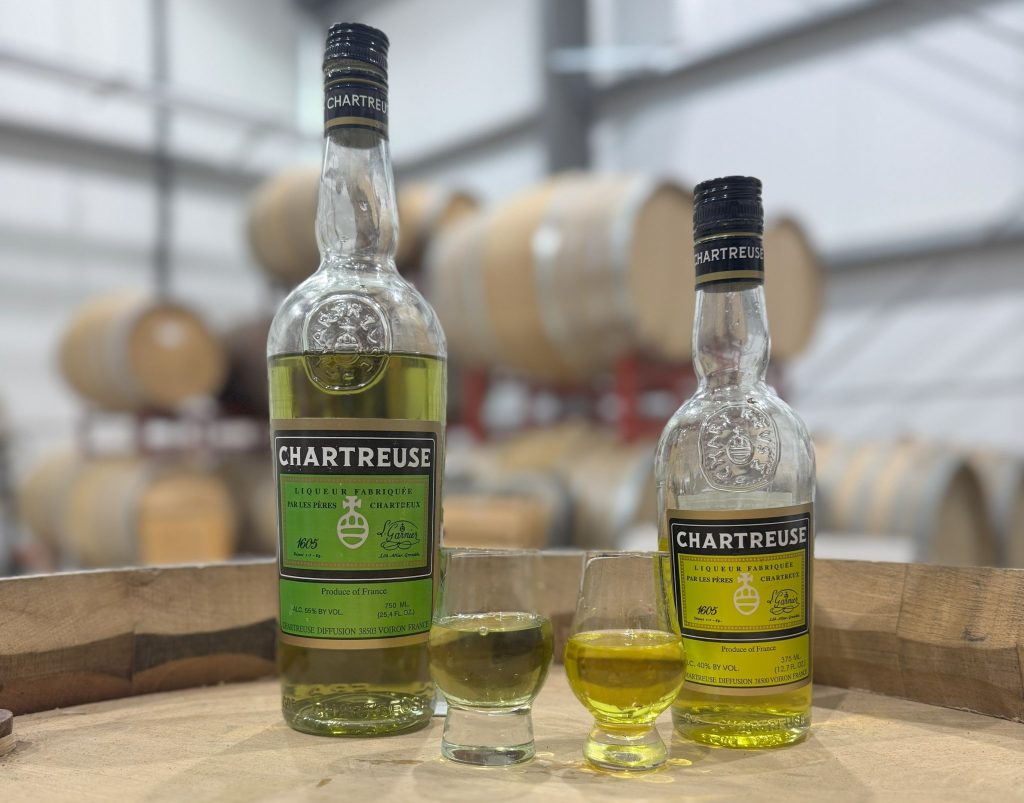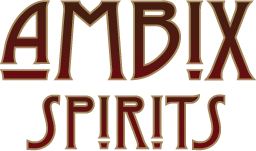Chartreuse is the only liqueur famous enough to have a color named after it. It gets its name from the Chartreuse Mountains and a Carthusian monastery of the same name that has made the liquor since 1764.
Much has been written about the complex history of chartreuse, the monks who make it, and the secrecy behind its recipe. Today we explore the ingredients of Chartreuse and how we developed our own liqueur inspired by it.

The Elixir of Long Life
In 1605, Marshal François-Annibal d´Estrées, gave an ancient manuscript for an “elixir of long life” to Carthusian monks at a monastery near Paris. This origin of this manuscript was unknown and few have seen it, but it was said to have 130 herbs and plants and was of unknown origin.
The Carthusian monks built a apothecary and worked to decipher the ancient manuscript but ultimately failed to reproduce the elixir. The manuscript was then forgotten in the monk’s library for over a hundred years until Dom Michel Brunier de Larnarge found the manuscript in 1736 and brought it to the Grande Chartreuse Monastery a year later and revived the development effort in the Chartreuse mountains.
For the next 18 years a series of monks dedicated themselves to decoding the manuscript. Brother Jérôme Maubec declared success in 1755 with the first elixir of long life of the Grand Chartreuse Monastery which was 71% ABV and red in color. Maubec’s successor, Brother Antoine Dupuy continued the work and eventually came out with a green version in 1764 which was codified in a seven page secret manuscript entitled “Composition of the Elixir of Chartreuse”.
The Chartreuse elixir of 1764 is a traditional herbal medicine designed for its curative properties not its taste. It is less sweet and more assertive than the normal Chartreuse liqueurs. The original product recently became available in the United States a as Chartreuse Vegetal de la Grande Chartreuse and is worth seeking out.
Green & Yellow Chartreuse

During the turmoil of the French revolution and the wars that followed the monks were expelled from their mountain home. However, they were able to save the elixir manuscript and keep its secret. Eventually the manuscript ended up in Grenoble in the protective custody of the former Pharmacist of Chartreuse.
When the monks were allowed back to their Monastery, they had not been able to recover the manuscript and so they developed a new version of the elixir. Ten years later they re-acquired their manuscript just as there was a growing thirst for sweet herbal liqueurs that could be enjoyed and not just used as medicine. The monks developed and released two liquors in 1840, Green Chartreuse and Yellow Chartreuse. These 1840’s versions, which are lower in alcohol, sweeter and smoother than the elixir took off. In about 30 years a local herbal elixir transformed into a global liqueur brand selling millions of bottles per year.
While the recipes and processes are kept incredibly secret with no known leaks, the herbs in the three expressions are stated to be substantially similar.
The vegetal elixir is unaged, 69% ABV and said to be distilled once followed by a maceration and extraction process.
Green Chartreuse is 55% ABV and much more sweet. It is said to be distilled multiple times and is well aged. The color comes from additional maceration with the green herbs. It is said to use sugar beets for the base alcohol.
Yellow Chartreuse is 43% ABV. Like green chartreuse it is more sweet than the elixir and is also well aged. Many people claim that saffron is used to color it and that the base alcohol comes from wine grapes rather than sugar beets.
How Chartreuse is Made
The only way to truly learn the recipe is to become a Carthusian monk, take a vow of silence, and become lucky enough to be one of the two monks entrusted with the recipe.
The Chartreuse website simply states that there are “130 plants, bark, roots, spices and flowers”
There are many internet articles that state with great confidence some of the herbs in Chartreuse, but a review of the references used makes it apparent that there is no basis of truth in the claims. We have found no reliable source of information on the herbs actually used in Chartreuse and welcome feedback.
We developed the recipe for our Chartreuse inspired liqueur from a treatise written by Pierre Duplais in 1866, not long after the release of Green & Yellow Chartreuse. The treatise was translated into English as a 700 page tome by Marcellus McKennie in 1871. All versions of the treatise are available online.
Duplais did not know the actual recipe but he claims to have developed “perfect imitations of the liqueurs manufactured by the monks.” His recipe includes lemon balm, hyssop, peppermint, génépi, balsamite, thyme, angelica seeds, angelica root, arnica flowers, buds of balsam poplar, cinnamon and mace macerated in alcohol and then distilled. Duplais then suggests to obtain the yellow-green color using saffron or caramel mixed blue coloring derived from Indigo.
For our version we started with a pear spirit base. For the herbs we used the Duplais recipe as a basis but substantially increased the amount of génépi, costmary, and angelica root and we also added rosemary, oregano, sage, and lavender to the spirit. Many of the herbs were grown on our farm but the génépi was imported from a grower at ~7,000 feet in the Hautes-Alps region of France near the Grande Chartreuse monastery.
We aged our liqueur in a barrel for 6 months to smooth it out and give it a yellow color before adding locally grown indigo dye made by a friend to produce the classic blue-green color.
References
A discussion of the original recipe
A Treatise on the Manufacture and Distillation of Alcoholic Liquors

